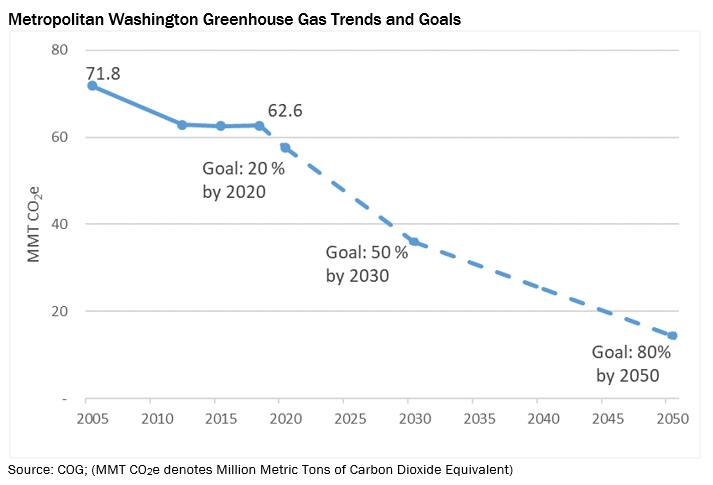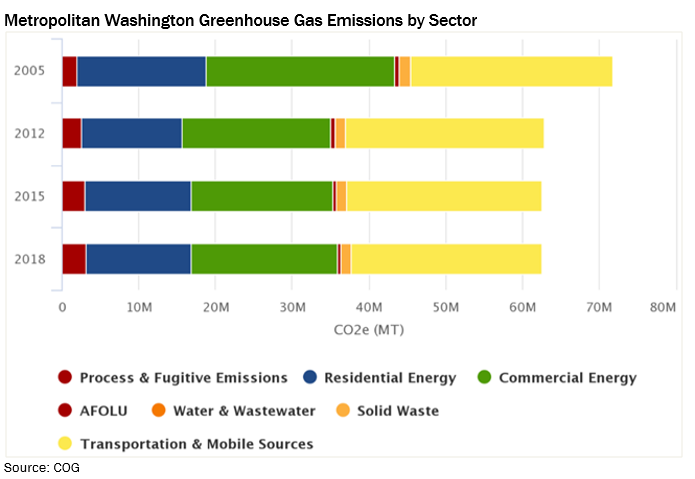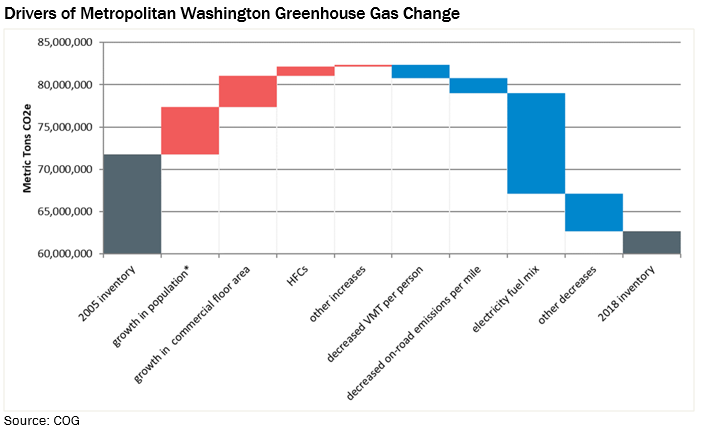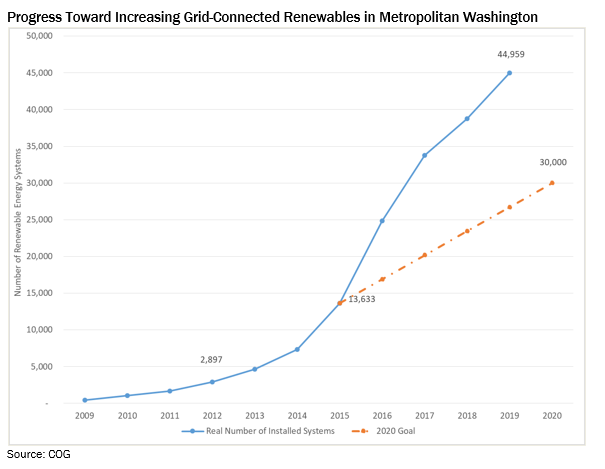Area officials on the Metropolitan Washington Council of Governments (COG) Board of Directors have approved a new greenhouse gas (GHG) emissions reduction goal for the region. The new goal calls for a 50 percent reduction in GHG emissions below baseline levels—or 2005 emission levels—by 2030.
Metropolitan Washington is already experiencing the impacts of climate change. Heat is the leading cause of weather-related deaths in the region, and the region saw 13 95-degree days in 2019. Without a decrease in emissions, the National Oceanic and Atmospheric Administration (NOAA) projects a significant increase in the number of high heat days for the region—perhaps more than 50 to 100 over 95 degrees by 2065. It also projects more frequent heavy precipitation events.
According to the Intergovernmental Panel on Climate Change, to avoid the most severe climate impacts, global greenhouse gas emissions must fall by at least 45 percent from 2010 levels by 2030 and to carbon neutrality by 2050.
The region’s new 2030 goal reflects this urgency, eliminates a 30-year gap between the previously endorsed 2020 and 2050 targets, and will help the region more closely track its progress.
“Metropolitan Washington jurisdictions recognized years ago the need for urgent action to address climate change,” said Penny Gross, COG Climate, Energy, and Environment Policy Committee (CEEPC) Chair and Fairfax County Supervisor. “Through collaborative planning and action, the region has made significant progress, but continued, expedited, and concerted efforts at all levels of government and across sectors is needed to achieve our 2030 goals and beyond.”

The COG Board first set a series of ambitious goals in 2008 to reduce emissions: 10 percent below 2005 levels by 2012, 20 percent below by 2020, and 80 percent below by 2050.
The region surpassed its 2012 goal, and reduced emissions by 13 percent by 2018. This was achieved despite a nearly 20 percent growth in area population over that time. However, inventories show the rate of emission reductions slowing, with the region likely to fall short of its 2020 goal.

According to COG’s most recent GHG inventory, much of the region’s progress reducing emissions since 2005 can be attributed to a cleaner energy grid, cleaner cars, and reduced vehicle miles traveled per person. For example, the region has greatly surpassed its 2020 goal for grid-connected renewables (like solar and wind systems). The main drivers of increased emissions include population growth, commercial space, and hydrofluorocarbons (such as those created for refrigeration).


CEEPC’s forthcoming 2030 Climate and Energy Action Plan will include recommended actions for local governments to take to achieve the region’s shared climate goals. The plan will include priority actions for reducing emissions in the built environment and transportation sectors, two large sources of emissions in the region.
In 2019, COG was named a Regional and Metro Scale Climate Leader by the Global Covenant of
Mayors for Climate and Energy (GCoM). COG and its members are following GCoM’s framework of global best practices for climate planning in developing the region’s action plan.
COG and its members also plan to analyze the effects of COVID-19 on energy use and emissions once health concerns are substantially mitigated, and incorporate this information into future climate planning.
MORE: COG Board Resolution Endorsing Regional Climate Mitigation and Resiliency Goals